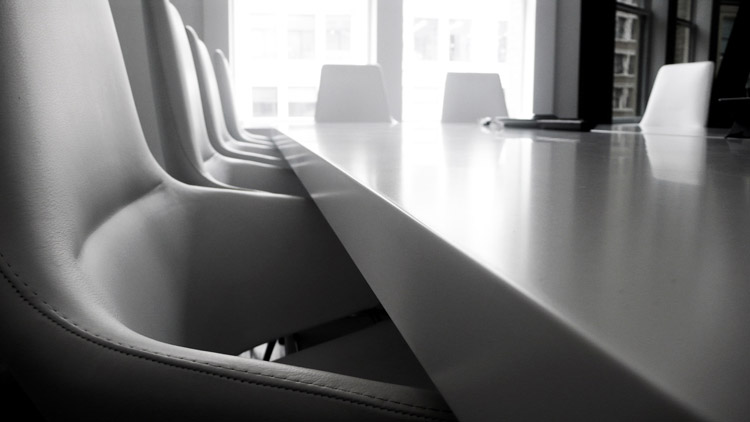
The Importance of Ergonomics in the Office
Ergonomics can be used as a method for reducing work related sick leave whilst increasing staff productivity, retention and well being.
In the Cambridge English dictionary, Ergonomics is defined as:
“the scientific study of people and their working conditions, especially done in order to improve effectiveness”
An example given: "The ergonomics of the new office furniture have reduced eyestrain and back problems among the computer users."
And in the American Heritage Science Dictionary, it is defined as:
“The scientific study of equipment design, as in office furniture or transportation seating, for the purpose of improving efficiency, comfort, or safety”
Essentially, Ergonomics is about designing for people and their interactions with products, systems or processes. If done right, it will often go un-noticed; but if done badly it can seriously affect the efficiency, health or safety for individuals in their working environment.
A published study into the impact of Office design on sick leave rates was conducted by the Institute of Ergonomics & Human Factors in 2013 for their Issue 2, Volume 57 release.
The study measured the number of short sick leave spells and long (medically certified) sick leave spells over a 12 month period recorded over 3 years between 2010 and 2012.
In the study, they looked at office types and their correlation between absenteeism in both men and women. They defined Office Types by their architectural features:
Cell-Offices as being single rooms where work is concentrated and independent.
Shared-rooms as rooms typically containing 2-3 people primarily used for team based work.
Open-Plan offices as groups of employees sharing a common workspace in varying configurations. These types were further split into subcategories of small (4-9 people); medium (10-24 people); and large ( >24 people per room), and were described as being based on an open flow of workspaces where desks are freely arranged in the room or within rows.
Flex-Offices were defined as being similar to Open-Plan offices but with the exception of additional backup spaces designed for work activities not suitable to being carried out at a personal workstation. For example, private telephone call areas, meeting rooms or rooms for concentrated working activities.
Combi-Offices were defined as being used in situations where more than 20% of the work in the office is team based and not done at the personal workstation. In this layout, there is no strict spatial definition and personal workstations can be either individual rooms or open-plan, but the main focus is on rooms used for group activities for prolonged periods of time such as meeting and project rooms.
The results of this multi-year explorative study found that there was a very strong correlation between office type and days off sick. The conclusion drawn was that open-plan offices are less conducive to good employee health, with more women taking short leave absence in these environments. As for men, it was found that they took more leave in the Flex-Office variant of the open-plan design. The explanations offered for these results ranged from increased risk of infection due to a larger number of people in a confined area, to environmental stressors like noise and equipment. Overall, Cell-Offices and Combi-Office designs provided the least absenteeism. The conclusion drawn from this observation was that these layouts gave smaller working units greater personal control and reduced environmental stressors. This also gave the employees a sense of value within the group which effectively increased the cohesion between the workers. This often resulted in an increased sense of dependence and reliance on each other being present and so an increase in presenteeism (that is, being at work despite being sick).

In 2013, the Office for National Statistics (ONS) reported that 131 million days were lost in the UK due to sickness absences during 2013. This equated to an average of 4.4 days lost per worker. In a separate report, the ONS stated that the average weekly salary in 2013 was £517. By doing the simple maths using an employee true cost calculator, the average costs to businesses per employee per working day was roughly £228. This means that UK businesses lost an average of £1000 per employee per year due to sickness absenteeism in 2013.
The initial report indicated that minor illnesses were the most common reason for taking leave, but the majority of days – 31 million – were lost due to musculoskeletal problems (for example, back, neck and muscular pain) over any other cause. These are problems which may have been averted by putting a little extra impetus into the ergonomic design of the working environment.
More recent statistics from the ONS provide an even more bleak picture, citing that Sickness and absence cost the UK economy 149 million working days in 2021. High rates of employee absence can be damaging to your business’ profits, especially if absences are paid for without any return.
Whilst not always possible to achieve due to practicalities of location, budgetary reasons or other factors, at Spatial Environments we try our upmost to design office solutions with ergonomics at the forefront of our minds. Sometimes compromise is required, but ultimately we endeavour to spend the extra time required to create beautiful, ergonomic solutions which go a long way into reducing work related sickness and in increasing staff efficiencies.
In major cities, many office buildings are limited by their underlying structure which often makes open-plan offices your only option. So, in light of these findings, how can you improve the working environment for your employees? Well, the answers may surprise you. A cosier, people friendly office environment can be created by the clever use of lighting, subtle use of acoustic panelling and suitable ergonomic desks, seating and storage solutions designed to aid human biomechanics.
With modern manufacturing techniques and an increased impetus into designing more ergonomic office furniture, the future looks very promising for reducing work related sickness and absenteeism